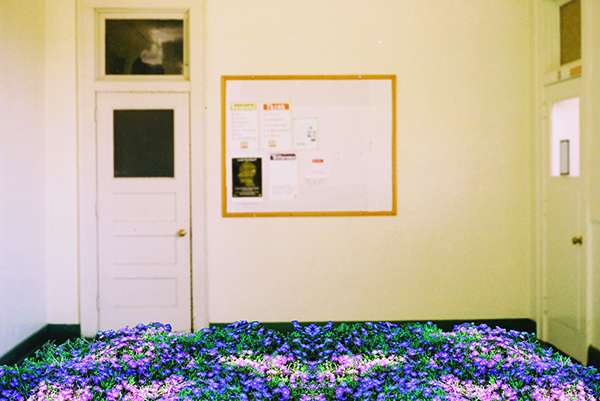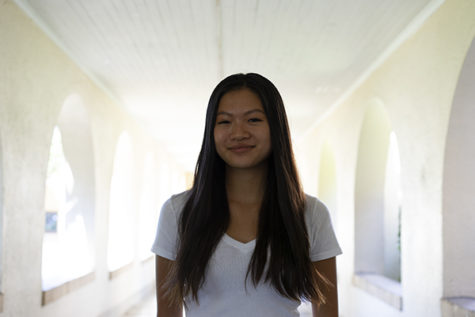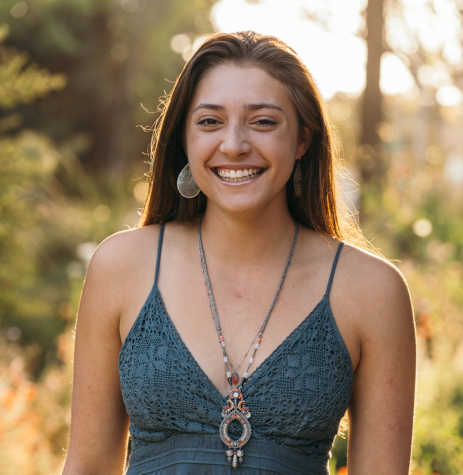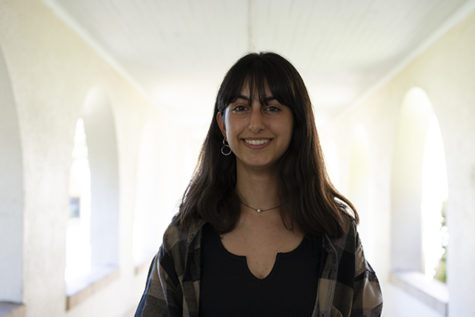Planting a New Narrative
Amidst the pressures Palo Alto high schools, students’ true opinions on the rigorous environment are not adequately represented in media coverage
Warning: This article addresses issues regarding mental health and suicide.
Every day at 7:00 a.m., sophomore Anton Tompert jumps straight into his morning routine: stretching and immediately leaping into an ice-cold shower. Minutes later, three eggs sit sizzling on the pan as two pieces of toast flop onto the plate.
“Eating a good breakfast isn’t just a way to help me focus during the day, it makes me feel clear,” Tompert said. On top of his heavy workload at school, he tries to find ways to stay level headed. Returning home, he finishes homework and dedicates time to boost his well-being. Since deciding to make simple changes in his life, Tompert has begun reading, journaling, meditating and listening to podcasts instead of music. Physical health is also a crucial aspect to Tompert’s routine and he includes a workout every night, runs with the cross country team and consciously makes efforts to stay hydrated. “It’s really basic activities,” Tompert said. “Now it’s really easy to pick up good habits.”

Tompert is one of the thousands of teens residing in Santa Clara County in the heart of Silicon Valley, home to countless high profile schools. Known across the nation for their academic rigor, this district and other surrounding communities have made a name for themselves in the media of cultivating highly academic and driven students. From national newspaper articles to a full-blown documentary, this media attention has made it widely accepted that these students face pressure like no other.
Every year, Palo Alto schools take new measures to ease this increasing pressure, especially after the teen suicide clusters the community has faced in the past. A suicide cluster is defined by the Center for Disease Control and Prevention to be three or more suicides occurring in a short time frame and in the same geographical area. Palo Alto has seen two clusters in the past 11 years, with six teens lost in the 2008-2009 school year and another four in the 2014-2015 school year. These clusters have gained national attention and prompted both the Palo Alto community and those outside of it to wonder what factors could have led to the loss of these adolescent lives.
In the last six or seven years, media sites including The Atlantic, KQED and The Mercury News have been criticized for their coverage on the suicide clusters in the Palo Alto community. Their breaking news headlines are not ones that speak of excellence, creativity and drive. Instead, they portray Palo Alto as a dystopian society that industrially produces academically perfect students, constantly straining themselves in order to attend the most prestigious colleges in the country at the expense of their mental health.
According to those living in the Silicon Valley, the idea of having higher rates of anxiety, depression and suicide is just one side of the deeply complex narrative of a strong and unified community. Just this past March, a documentary about Palo Alto schools was released. The film, “The Edge of Success,” addressed the recent suicide clusters in Palo Alto through sharing real-life experiences of Palo Alto students, teachers and parents. The producer and writer of this documentary, Liza Meak, was interested in more than just the journalistic standpoint of the topic. “I quickly realized that to give this story the nuance and the time that it deserves, it wasn’t going to work as a five or six-minute story that would feel sensational,” Meak said.

Due to the sensitivity of the topic at hand, there were strong responses to the film. A spotlight was placed on all Palo Alto students at the time of the documentary’s release; the same spotlight that is seen after the publishing of every article and magazine regarding the suicides in Palo Alto. “What’s happening in Palo Alto is happening in Redwood City is happening in Detroit, Michigan, and all over the country,” Meak said. “I’ve talked to people across the country working on the documentary, and spoken with mental health organizations who work with high schools and colleges across the country looking at the issue of stress, anxiety, depression and overall mental health.”
Despite the negative attention the documentary garnered from the Palo Alto community, Meak claims that the content of the film was made with a positive goal in mind and was built surrounding the opinions of the students themselves. “Our goal from day one was ‘let’s focus on the kids’ and that’s what we tried to do,” Meak said. “We tried to get a diverse cross-section of students that went to Gunn and get their perspectives; some people may agree with them, some people may not, but it’s their stories. We’re not trying to set an agenda, what they told us is what they’re telling us.”
Chloe Sorensen, currently a junior at Stanford University, was a sophomore at Gunn High School when the suicide cluster occurred. Sorensen was particularly frustrated by the way that the media approached the coverage of these events. “I didn’t feel that those stories adequately reflected the reality of what it was like to live in Palo Alto and what most students are dealing with,” Sorensen said.
Sorensen also comments on the “attention-grabbing, sensational and dramatic” ways the media reported on these events. She explains that this style of reporting glamorizes suicide, thus leading to an increase in suicide rates. “When you emphasize the fact that there are resources available or that recovery is possible and then that mental illnesses are treatable, suicide rates actually decrease,” Sorensen said. The Palo Alto community has made a substantial amount of progress in the past five years. Advances include the development of mental health resources, on-campus wellness centers, the implementation of a social-emotional learning curriculum and fundraisers for local hospitals to support mental health crisis services.
Whitney Aquino, the Wellness Outreach Worker at Palo Alto High School, estimates that around 50 to 70 students visit the on-campus wellness center per day, which have been open for the past three years at Paly and Gunn. “The Wellness Center is a safe space on campus for students. They can come here when they are seeking support, feeling overwhelmed, stressed, feeling ill, even thirsty or hungry!” Aquino said. She also said that one of the main goals of implementing these centers at school has been to reduce the stigma around mental health for students. “[Mental health stigma] is a pervasive, worldwide issue that prevents many from seeking the help that they need. Although we have an open-minded community at Paly that generally supports mental health and wellness, there are many factors that contribute to the stigma of mental health,” Aquino said. “Our goal is to work with the community as a whole to raise awareness about the importance of mental health and provide education around the topic, and in doing so, reduce the stigma that students may face.”
Kaitlyn Clark, a junior at Gunn High School, believes that “The Edge of Success” documentary failed to acknowledge these initiatives at Paly and Gunn. “The [documentary] didn’t show the positive aspects of Gunn and Palo Alto schools,” Clark said. “I don’t think that it would be beneficial for students to watch this [documentary] if it solely reflects the bad side of Palo Alto.”
On Clark’s first day of high school, she heard the scripted in-class announcement that a senior had died by suicide earlier that morning. “My throat choked up,” Clark said. “I didn’t expect this to happen, especially on the first day… Honestly, the rest of the day was a blur.”
Clark believes that “The Edge of Success” failed to acknowledge the beneficial changes that the school has implemented to reduce the stress of students since that tragedy. “Instead of constantly focusing on the painful past, we need to focus on the future and talk about ways to make the situation better,” Clark said.
The discussion of mental health is often confused with the topic of mental illness. Mental health is commonly associated with high stress, anxiety and suicide, but it is defined as “our emotional, psychological and social well-being.” Our level of mental health correlates with how we think, feel, act and behave. The use of the word “level” implies that there is no fixed definition — mental health is a spectrum. Many preconceived ideas of mental health are based on a black and white scale, which can lead to polarizing misconceptions.
Dr. Scott Barry Kaufman, an American psychologist, author, professor and podcaster, found that one’s environment can both help and hurt their ability to flourish. He sees this as a source of the community’s stress problem, as well as it occasionally acts as a positive aspect in society.
“It seems like personal growth is not as valued in some of these hyper-competitive environments where the bottom line is getting into the best school or getting the best grades, winning this award, and having this company,” Kaufman said. “It really is creating a generation of deeply unfulfilled people.”
Instead, Kaufman encourages students to seek professional help if they are experiencing issues with their mental health. “If you’re depressed or you’re anxious and you need help, you go to a clinical psychologist,” Kaufman said. “The clinical psychologist is not going to teach you how to create [safe spaces], but [how to] go around telling people you need safe spaces.”
The Palo Alto student community still seems to shine in its excellent self and peer leadership. More students are fulfilling their basic needs and ensuring that their voices are respected and heard. Within school clubs and individual advocacy, there is a lot of activism and support relating to the students and their interests, as well as their mental health. However, even with these support programs and clubs, there always seems to be a lingering mindset of needing to meet an incredibly high standard.
By making a conscious decision to eliminate this factor of fear in regards to the weight of their grades and level of classes, students can begin to see an extremely positive change. “You feel this higher sense of moral elevation and I think young people today really underestimate the importance of moral elevation for well-being,” Kaufman said. “They overestimate the importance that acceptance or belonging in certain groups will give them well-being.”
Many Palo Alto students are beginning to realize the importance of separating their lives from the world of academics. They are also helping to implement changes in their schools which better aid student mental health and wellness. Following the suicide cluster in her community, Sorensen found that she needed to channel her grief and pain into something productive and positive. “We worked on increasing access to counseling services, built upon a mental health awareness campaign and brought mindfulness programs to Gunn,” Sorensen said. After seeing the impact these small efforts had on her community, she was determined to take her efforts to bring awareness around mental health to the district level. “I began speaking to the school board [and attended] other school board meetings,” she said.
Courtney Custodio, a senior at Los Altos High School, is another student who is determined to inspire change. “We’re hoping to connect students on campus with resources and will open up more discussion among LAHS parents and students about teen mental health,” Custodio said. She is planning on organizing at least one panel, some info booths and interactive and educational activities for the school. Her hope is that these efforts will spark more conversation between students and administration on how mental health resources could be further improved.
Phebe Cox, a senior at Gunn High School, is the president of the club “Bring Change to Mind,” which is dedicated to challenging the stigma around mental health and bringing up conversation on various mental health issues. Cox prepares for the upcoming school year with the hope to organize more club-oriented activities. She is also focused on creating an environment in which students feel safe when discussing these sensitive topics.
Cox additionally comments on Gunn High School’s mental health resources — including a new building with the top floor dedicated to being a wellness center for students. “I thought that was a really good step in the right direction,” Cox said.
Gunn junior Haleigh Brosnan agrees that the schools have been working towards helping their students, but she also has some ideas of her own. After reading the article “The Silicon Valley Suicides” in The Atlantic, Brosnan wishes that there were more educational parent meetings on issues of mental health. Brosnan believes that the competitive environment is built off of the desire to live up to their parents’ high standards and then comparing those standards to that of one’s peers.
“The district has to do a better job of reaching out to parents because parents often know their child better than Teacher Advisors know their students.” Along with these new and improved changes within the school community, there are other solutions that students have found to cope with stress and anxiety in their everyday lives.
Brosnan took advantage of her school’s Wellness Center where she would grab tea and relax; at home, listening to music and doing her makeup were her remedies for stress. Students don’t always use the school’s resources and may choose methods of relaxation and consolation outside of school. Paly freshman Kellyn Scheel is currently adjusting to high school life with the help of her friends and family. “I’m feeling a little scattered at the moment, but that doesn’t necessarily mean bad,” Scheel said. “There’s definitely a lot going on in my head right now, considering I just moved to a new school and I’m trying to figure out everything with the workload, sports and social things, but it’s also very exciting.”
Scheel has found that staying organized helps ease her mind. “When I have things written down and organized and in a planner, it helps me find time to fit everything in, which leaves me a lot of other time where I can do things that help me out socially or with my anxiety,” Scheel said. “Paly makes it pretty easy to communicate and email and get to teachers whenever you need to.”
Like many other students, Scheel finds time in her schedule to participate in activities that help clear her mind and relax. “I play the guitar and I also play the piano,” Scheel said. “They’re a way to calm down.”
Scheel understands the importance of creative outlets. Her ability to relax and take a step away from her school work ultimately stimulates new thinking. “I also write a lot of poetry and it helps get everything out of my head in a way that makes sense to me,” Scheel said.
For many, exploration of the arts can serve as a break from the heavy STEM emphasis present in the Bay Area, especially for those who don’t resonate with the subjects of the technological center of the world. “All of the arts have become a really big part of my life and are usually how I collect myself because they help me get out of the chaos,” Scheel said.
From the organization of activities to making time for relaxation, Paly and surrounding high schools are continuously making an effort towards integrating mental health awareness into their communities. More than ever before, parents, teachers and even the students themselves are working to strike a balance between challenging adolescents and finding their utmost limits. Through this process, media attention and disagreements are inevitable but despite these obstacles, it is important to keep in mind for whom we are fighting: our students and their futures.
If you or someone you know is struggling with their mental health please contact the following support services:
24/7 Teen Crisis Hotline: 1-888-247-7717
SCC Suicide Crisis Hotline: 1-855-278-4204

Katherine joined C Magazine because she was amazed by the creative designs as well as interesting text the magazine continuously presents. She love the...

2019-2020 - Staff Writer
2020-2021 - Managing Editor
Hear more about me!

2019-2020 - Staff Writer
2020-2021 - Editor-in-Chief
I joined C Mag because it felt to me as though the magazine went beyond the borders of the...







